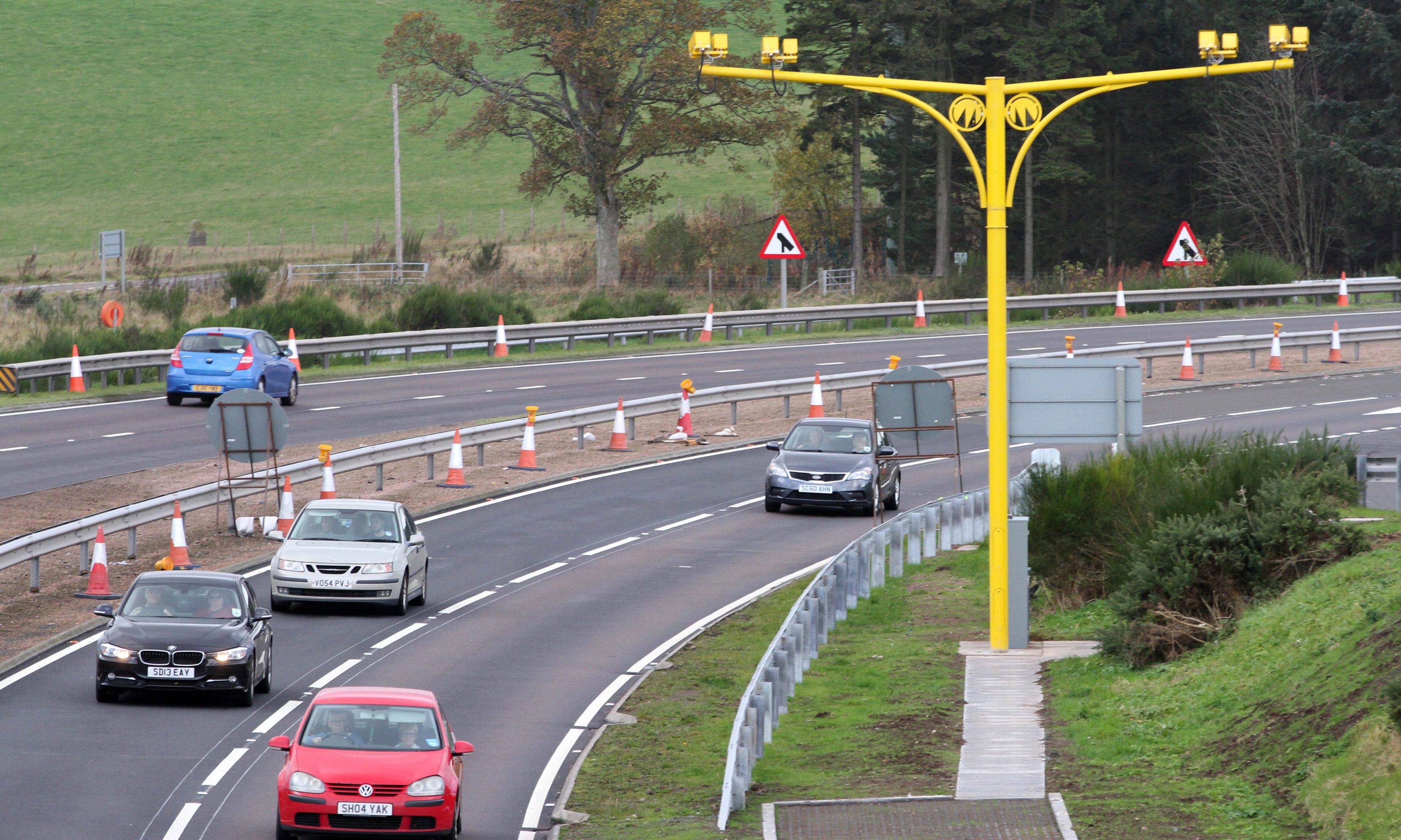Average speed cameras have reduced fatal and serious casualties on the notorious A9 Perth to Inverness road by 59%.
Figures released by the A9 Safety Group also found that in the 21 months since the introduction of the cameras, the number of fatal and serious collisions between the two cities fell by 33%.
The statistics show the number of “serious injury casualties” between Perth and Inverness decreased by almost 69%.
As part of the £3 billion programme to dual the A9 between Perth and Inverness by 2025, it was decided to install the average speed cameras, along with introducing a higher speed limit of 50mph for HGVs to reduce driver frustration.
Maree Todd MSP, one of the representatives for the Highlands and Islands ward, said: “The A9’s improving safety record is really reassuring news for the thousands of drivers that use Scotland’s longest trunk road every day as well as those travelling over the busy Christmas holidays.
“There has been a sustained improvement in driver behaviour and a corresponding fall in collisions and casualties – with 43% fewer fatalities and a 63% reduction in serious casualties between Dunblane and Inverness in the first 21 months of the average speed cameras.
“Every road death is one too many and the Scottish Government remains steadfastly committed to reducing casualty numbers further.”
She continued: “Once completed, the dual carriageway will provide better links for public transport and the various tourist and recreational attractions along the route.”
The statistics, which showed the number of fatal and serious collisions between Dunblane and Inverness on the A9 fell by around 45%, were also welcomed by Lang Banks, director of World Wildlife Fund Scotland (WWF).
He said: “Once again we continue to see the very clear safety benefits that average speed cameras have had by helping to enforce speed limits on the A9.
“However, alongside other tools, average speed cameras are also a cost effective way to reduce climate emissions as well as fuel costs for motorists.
“To reduce health-threatening levels of air pollution and our meet our climate targets, the use of average speed cameras and other approaches to help reduce excessive speeds should be seriously considered on all major roads across Scotland.
“As part of its forthcoming climate and energy plans, we very much hope that the Scottish Government will follow the advice of its own independent climate watchdog and consider greater enforcement of speed limits to help meet carbon targets.”
Murdo Fraser, MSP for Mid Scotland and Fife, a long-term campaigner to have the A9 dualled, said he welcomed the announcement but claimed many motorists want to know when the dualling work will be completed.
“Average speed cameras have resulted in longer journey times, and the real solution to the problems on the A9 is having it dualled as soon as possible,” he said.
The latest data from the A9 Safety Group contains collision and casualty data up to July this year along with other performance data up to September 2016. The data indicated that the number of vehicles detected by the speed cameras which were “considered for action’ by Police Scotland remained at an “extremely low” average of around 12 per day.
The Scottish Government have claimed the A9 dualling project is designed to deliver economic growth through improvements to road safety and journey times as well as better links to pedestrian, cycling and public transport facilities.
They also state the project will also provide greater access to the many tourism and recreation sites along the route of Scotland’s longest trunk road.
